Harvest Bell Peppers from Pots: Imagine biting into a crisp, juicy bell pepper, bursting with flavor, knowing you nurtured it from a tiny seed right on your own patio! There’s something incredibly satisfying about growing your own food, and bell peppers are surprisingly easy to cultivate in containers, even if you don’t have a sprawling garden.
Growing bell peppers has a rich history, dating back thousands of years in South America. These vibrant vegetables weren’t always the sweet treats we know today; early varieties were much hotter! Over time, through careful cultivation, they evolved into the mild and versatile peppers we enjoy in countless dishes. Today, the joy of growing your own food, especially something as colorful and useful as bell peppers, connects us to that long history of cultivation and self-sufficiency.
But let’s be honest, sometimes knowing when and how to harvest bell peppers from pots can be a little tricky. You don’t want to pick them too early and miss out on their full flavor and sweetness, but you also don’t want to leave them on the vine too long and risk them becoming soft or attracting pests. That’s where this DIY guide comes in! I’m going to share my tried-and-true tips and tricks for ensuring you get the perfect harvest every time.
This article will empower you to confidently harvest bell peppers from pots at their peak ripeness, maximizing their flavor and ensuring a bountiful harvest. Say goodbye to bland, store-bought peppers and hello to the delicious, homegrown goodness you deserve!
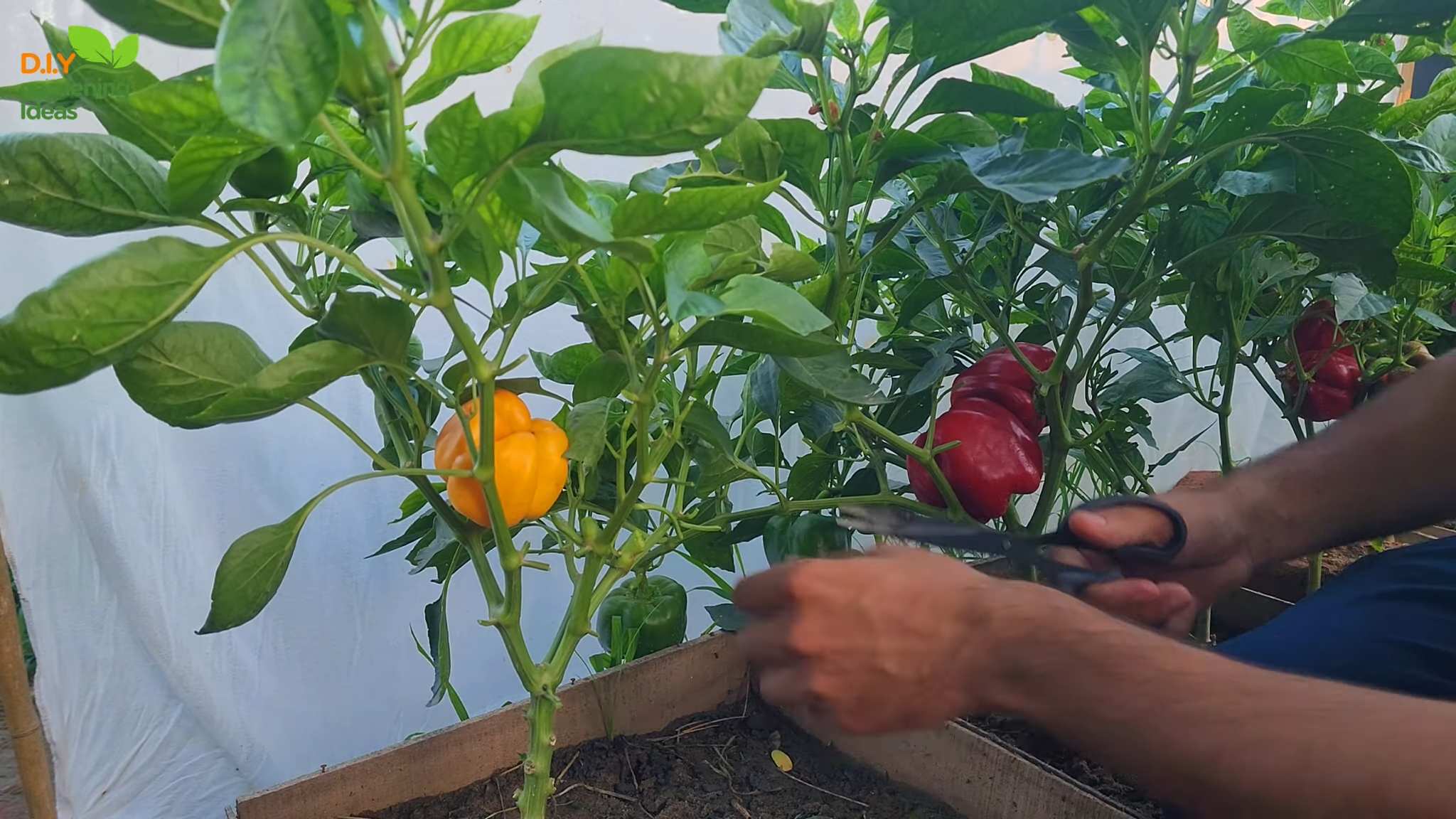
Harvesting Bell Peppers from Pots: A Beginner’s Guide
Okay, so you’ve nurtured your bell pepper plants in pots, watched them grow, and now you’re seeing those beautiful, vibrant peppers hanging there, practically begging to be picked. But how do you know when they’re *really* ready? And how do you harvest them without damaging your precious plant? Don’t worry, I’ve got you covered! This guide will walk you through everything you need to know about harvesting bell peppers from pots, ensuring you get the best possible yield and keep your plants healthy for continued production.
Understanding Bell Pepper Maturity
Before we dive into the harvesting process, let’s talk about maturity. Bell peppers can be harvested at different stages, depending on your preference. The color isn’t the only indicator!
* Green Peppers: These are the least mature. They’re firm, have a slightly bitter taste, and are often less sweet than their colored counterparts. Harvesting green peppers encourages the plant to produce more peppers, so if you’re aiming for quantity, this is a good option.
* Colored Peppers (Red, Yellow, Orange, Purple): These are fully mature peppers. They’ve had more time to ripen on the vine, developing a sweeter flavor and higher vitamin content. The color indicates the level of ripeness.
* Cracking or Soft Spots: Avoid harvesting peppers with cracks or soft spots, as these are signs of damage or disease.
Key Indicators of Readiness:
* Size: Bell peppers should reach a reasonable size for their variety. Check your seed packet or plant tag for expected size.
* Color: The color should be vibrant and uniform, depending on the desired ripeness.
* Firmness: The pepper should feel firm to the touch, not soft or squishy.
* Glossy Skin: A healthy bell pepper will have a glossy, shiny skin.
* Time Since Flowering: Generally, it takes about 60-90 days from flowering to harvest, depending on the variety and growing conditions.
Tools You’ll Need
Gathering your tools beforehand will make the harvesting process smooth and efficient. Here’s what I recommend:
* Sharp Pruning Shears or Garden Scissors: A sharp tool is essential for making clean cuts and preventing damage to the plant. Dull tools can crush the stem and introduce diseases.
* Gloves (Optional): While bell peppers aren’t prickly, gloves can protect your hands from dirt and potential irritants.
* Basket or Bag: To collect your harvested peppers.
* Cleaning Solution (Optional): A mild solution of soap and water to clean your peppers after harvesting.
Step-by-Step Harvesting Guide
Alright, let’s get to the fun part! Follow these steps to harvest your bell peppers like a pro:
1. Inspect Your Plants: Before you start cutting, take a good look at your plants. Identify the peppers that are ready for harvest based on the maturity indicators we discussed earlier. Check for any signs of pests or diseases.
2. Prepare Your Tools: Make sure your pruning shears or garden scissors are clean and sharp. You can wipe them down with rubbing alcohol to sterilize them and prevent the spread of diseases.
3. Locate the Stem: Find the stem that connects the pepper to the main plant. You’ll want to cut the stem about 1-2 inches above the pepper.
4. Make the Cut: Using your sharp pruning shears or scissors, make a clean, angled cut through the stem. Avoid pulling or twisting the pepper, as this can damage the plant.
5. Gently Remove the Pepper: Once the stem is cut, gently remove the pepper from the plant. Be careful not to damage any other peppers or branches.
6. Repeat the Process: Continue inspecting your plants and harvesting any other ripe peppers.
7. Handle with Care: Bell peppers are delicate, so handle them with care to avoid bruising. Place them gently in your basket or bag.
8. Clean Your Peppers (Optional): If you want to clean your peppers before storing them, you can gently wash them with a mild solution of soap and water. Rinse them thoroughly and pat them dry.
9. Store Your Harvest: Store your harvested bell peppers in the refrigerator. They should last for about 1-2 weeks.
Encouraging Continued Production
Harvesting your bell peppers isn’t just about enjoying the fruits (or vegetables!) of your labor. It also encourages the plant to produce more peppers. Here are a few tips to keep your plants thriving:
* Regular Harvesting: Harvest peppers regularly, even if they’re not fully ripe. This will encourage the plant to produce more flowers and peppers.
* Fertilizing: Continue to fertilize your plants regularly with a balanced fertilizer. This will provide them with the nutrients they need to produce a bountiful harvest. I like to use a fertilizer specifically formulated for vegetables.
* Watering: Water your plants regularly, especially during hot, dry weather. Bell peppers need consistent moisture to thrive. Check the soil moisture by sticking your finger about an inch deep. If it feels dry, it’s time to water.
* Pest and Disease Control: Keep an eye out for pests and diseases. Treat any problems promptly to prevent them from spreading and affecting your harvest. I always recommend organic pest control methods whenever possible.
* Support: As your plants become laden with peppers, they may need additional support. You can use stakes or cages to prevent the branches from breaking.
Troubleshooting Common Issues
Even with the best care, you might encounter some challenges while growing bell peppers in pots. Here are a few common issues and how to address them:
* Blossom End Rot: This is a common problem that causes the bottom of the pepper to rot. It’s usually caused by calcium deficiency or inconsistent watering. To prevent blossom end rot, make sure your soil is well-drained and that you’re watering your plants consistently. You can also add calcium to the soil by using bone meal or eggshells.
* Sunscald: This occurs when peppers are exposed to too much direct sunlight, causing them to develop white or yellow patches. To prevent sunscald, provide your plants with some shade during the hottest part of the day. You can also use shade cloth or plant them in a location that receives partial shade.
* Pests: Common pests that attack bell peppers include aphids, whiteflies, and spider mites. You can control these pests by spraying your plants with insecticidal soap or neem oil.
* Diseases: Bell peppers are susceptible to several diseases, including fungal diseases and viruses. To prevent diseases, make sure your plants have good air circulation and avoid overwatering. You can also use a fungicide to protect your plants from fungal diseases.
Extending the Harvest Season
Want to enjoy fresh bell peppers for as long as possible? Here are a few tips to extend your harvest season:
* Succession Planting: Plant new bell pepper plants every few weeks to ensure a continuous harvest.
* Cold Frames or Greenhouses: Use cold frames or greenhouses to protect your plants from frost and extend the growing season.
* Overwintering: In some climates, you can overwinter your bell pepper plants indoors. Bring them inside before the first frost and provide them with plenty of light and water.
Enjoying Your Harvest
Now that you’ve harvested your bell peppers, it’s time to enjoy them! Bell peppers are incredibly versatile and can be used in a variety of dishes. Here are a few ideas:
* Raw: Slice them up and add them to salads, sandwiches, or veggie platters.
* Roasted: Roast them in the oven with olive oil and herbs for a delicious side dish.
* Stuffed: Stuff them with rice, meat, or vegetables and bake them in the oven.
* Grilled: Grill them over an open flame for a smoky flavor.
* Saut茅ed: Saut茅 them with onions and other vegetables for a quick and easy stir-fry.
* Pickled: Pickle them for a tangy and flavorful condiment.
Preserving Your Harvest:
If you have more bell peppers than you can eat, you can preserve them by:
* Freezing: Dice or slice the peppers and freeze them in freezer bags.
* Canning: Can them using a pressure canner.
* Drying: Dry them in a dehydrator or oven.
I hope this guide has helped you learn how to harvest bell peppers from pots. With a little care and attention, you can enjoy a bountiful harvest of delicious, homegrown peppers. Happy gardening!
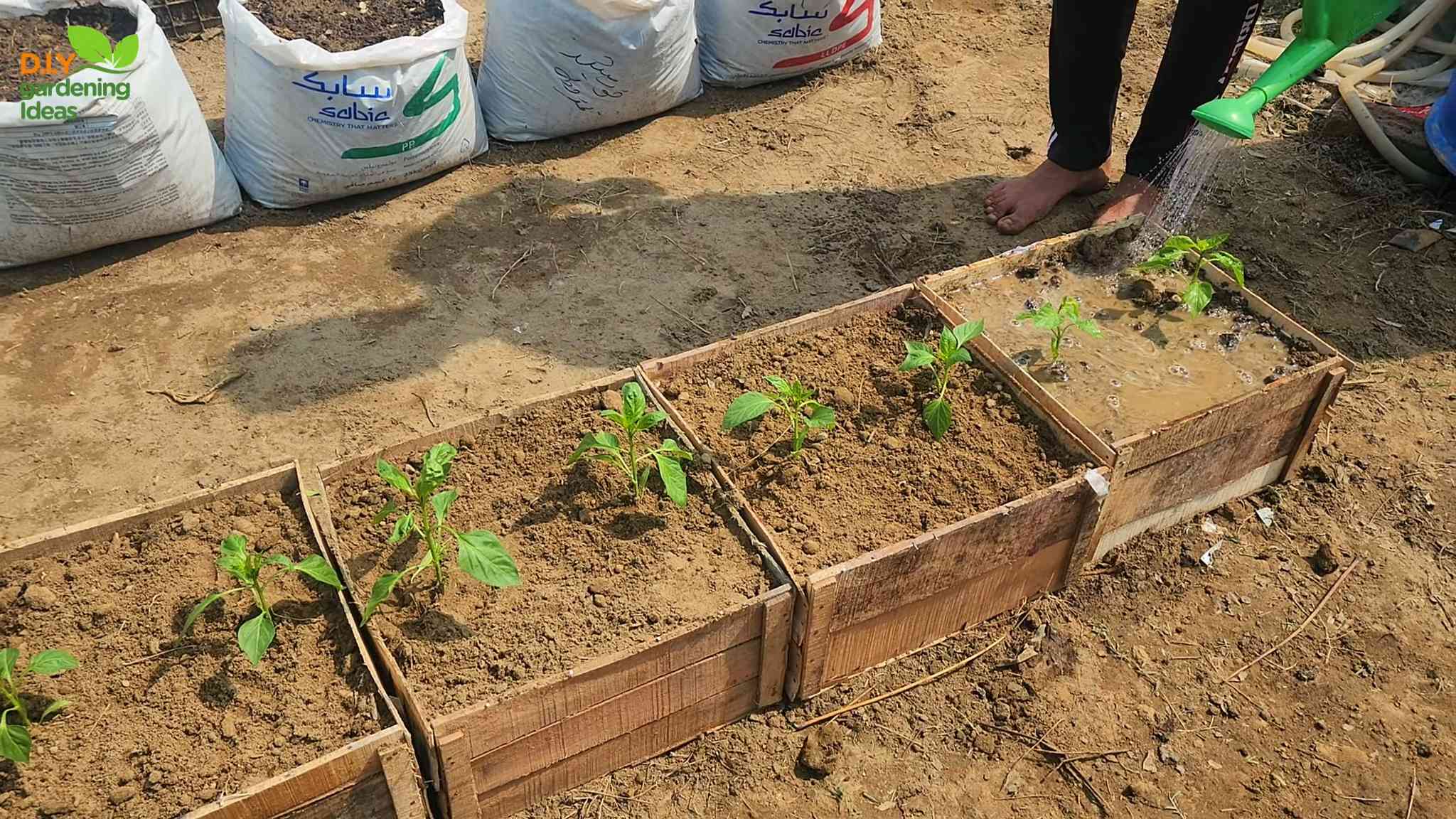
Conclusion
So, there you have it! Harvesting bell peppers from pots doesn’t have to be a guessing game. By paying close attention to the color, firmness, and stem condition, you can ensure you’re picking your peppers at their peak of flavor and nutritional value. This simple DIY trick 鈥?understanding the signs of ripeness 鈥?is a game-changer for any home gardener, especially those working with limited space.
Why is this a must-try? Because it unlocks the full potential of your homegrown bell peppers. Imagine biting into a perfectly ripe, sweet, and crisp bell pepper that you nurtured from seed to harvest. The difference between a store-bought pepper and a freshly picked, perfectly ripe one from your own pot is astounding. You’ll experience a burst of flavor you never knew existed. Plus, you’ll avoid the disappointment of picking peppers too early, only to find they lack sweetness and crunch.
Beyond the basics, consider these variations to enhance your bell pepper harvesting experience. For those who prefer a milder flavor, harvest your green bell peppers when they reach a good size and are firm to the touch. If you’re aiming for the vibrant sweetness of red, yellow, or orange bell peppers, patience is key. Allow them to fully mature on the plant, even if it means waiting a few extra weeks. You can also experiment with different varieties of bell peppers. Some varieties, like the mini bell peppers, are ready to harvest at a smaller size, while others, like the giant bell peppers, require more time to mature.
Don’t be afraid to experiment with different harvesting techniques. Some gardeners prefer to use pruning shears to cut the stem cleanly, while others gently twist the pepper until it separates from the plant. Find what works best for you and your plants. Remember to sanitize your tools before and after harvesting to prevent the spread of diseases.
We wholeheartedly encourage you to try this DIY trick for harvesting bell peppers from pots. It’s easy, rewarding, and will transform your gardening experience. Once you’ve mastered the art of harvesting ripe bell peppers, you’ll never go back to relying on store-bought peppers again.
But the journey doesn’t end here! We want to hear about your experiences. Did this guide help you harvest the perfect bell peppers? Did you discover any other helpful tips or tricks along the way? Share your stories, photos, and questions in the comments below. Let’s create a community of bell pepper enthusiasts and learn from each other’s successes and challenges. Happy harvesting!
Frequently Asked Questions (FAQ)
What if my bell peppers are still green but starting to get soft?
This is a common issue, and unfortunately, a softening green bell pepper usually indicates that it’s past its prime, even if it hasn’t fully ripened to its final color. Softness can be caused by overwatering, inconsistent watering, or even pest damage. While you can still harvest it, the flavor and texture won’t be ideal. It’s best to address the underlying issue to prevent this from happening to future peppers. Check your watering schedule, ensure proper drainage, and inspect your plants for any signs of pests.
How long does it typically take for a bell pepper to ripen from green to its final color?
The ripening time varies depending on the variety of bell pepper, the climate, and the growing conditions. Generally, it takes about 2-3 weeks for a green bell pepper to fully ripen to its final color (red, yellow, orange, etc.). However, in cooler climates or during periods of less sunlight, it may take longer. Be patient and continue to monitor your peppers for signs of ripeness.
Can I harvest bell peppers before they are fully colored?
Yes, you can harvest green bell peppers at any stage of their growth, as long as they are firm and have reached a reasonable size. Green bell peppers have a slightly bitter flavor compared to their fully ripened counterparts. Many people enjoy the taste of green bell peppers, especially in stir-fries or salads. However, if you’re aiming for the sweetness of a red, yellow, or orange bell pepper, you’ll need to wait until it fully ripens on the plant.
What are the best conditions for growing bell peppers in pots?
Bell peppers thrive in warm, sunny locations with well-draining soil. They need at least 6-8 hours of direct sunlight per day. Use a large pot (at least 5 gallons) to provide ample space for the roots to grow. Water regularly, especially during hot weather, but avoid overwatering. Fertilize your bell pepper plants every 2-3 weeks with a balanced fertilizer. Consider adding a layer of mulch to help retain moisture and suppress weeds.
My bell pepper plant is producing flowers, but no peppers are forming. What could be the problem?
There are several reasons why your bell pepper plant might be producing flowers but not setting fruit. One common cause is lack of pollination. Bell peppers are self-pollinating, but sometimes they need a little help, especially when grown indoors or in enclosed spaces. You can try hand-pollinating the flowers by gently shaking the plant or using a small brush to transfer pollen from one flower to another. Other potential causes include temperature stress (too hot or too cold), insufficient sunlight, or nutrient deficiencies.
How do I store harvested bell peppers?
To store harvested bell peppers, gently wipe them clean and place them in a plastic bag in the refrigerator. They will typically last for 1-2 weeks. Avoid washing the peppers before storing them, as this can promote spoilage. You can also freeze bell peppers for longer storage. To freeze them, wash, core, and chop the peppers into desired sizes. Blanch them in boiling water for 2-3 minutes, then transfer them to an ice bath to stop the cooking process. Drain the peppers thoroughly and freeze them in a single layer on a baking sheet. Once frozen, transfer them to a freezer bag or container.
What are some common pests and diseases that affect bell pepper plants?
Common pests that affect bell pepper plants include aphids, spider mites, and whiteflies. These pests can suck the sap from the leaves, causing them to become yellow and distorted. You can control these pests by spraying your plants with insecticidal soap or neem oil. Common diseases that affect bell pepper plants include blossom-end rot, fungal leaf spot, and viral diseases. Blossom-end rot is caused by a calcium deficiency and can be prevented by adding calcium to the soil. Fungal leaf spot can be treated with a fungicide. Viral diseases are often spread by insects and can be difficult to control. It’s important to practice good sanitation and remove any infected plants to prevent the spread of disease.
Is there a difference in taste between different colored bell peppers?
Yes, there is a noticeable difference in taste between different colored bell peppers. Green bell peppers have a slightly bitter and grassy flavor. Yellow and orange bell peppers are sweeter and milder than green bell peppers. Red bell peppers are the sweetest and most flavorful of all. The color of a bell pepper indicates its level of ripeness, with red being the most ripe and green being the least ripe.
Can I grow bell peppers indoors?
Yes, you can grow bell peppers indoors, but it requires providing them with the right conditions. They need at least 6-8 hours of direct sunlight per day, which may require the use of grow lights. Use a large pot with well-draining soil and water regularly. Hand-pollinate the flowers to ensure fruit set. Choose a compact variety of bell pepper that is well-suited for indoor growing.


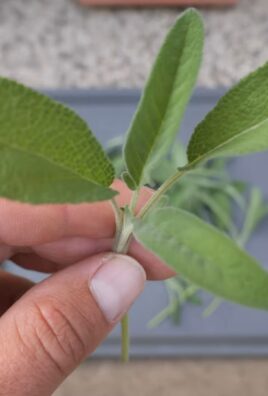
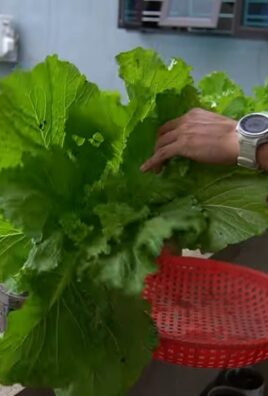
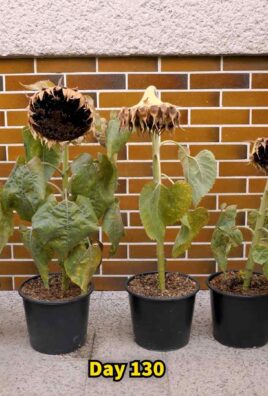
Leave a Comment